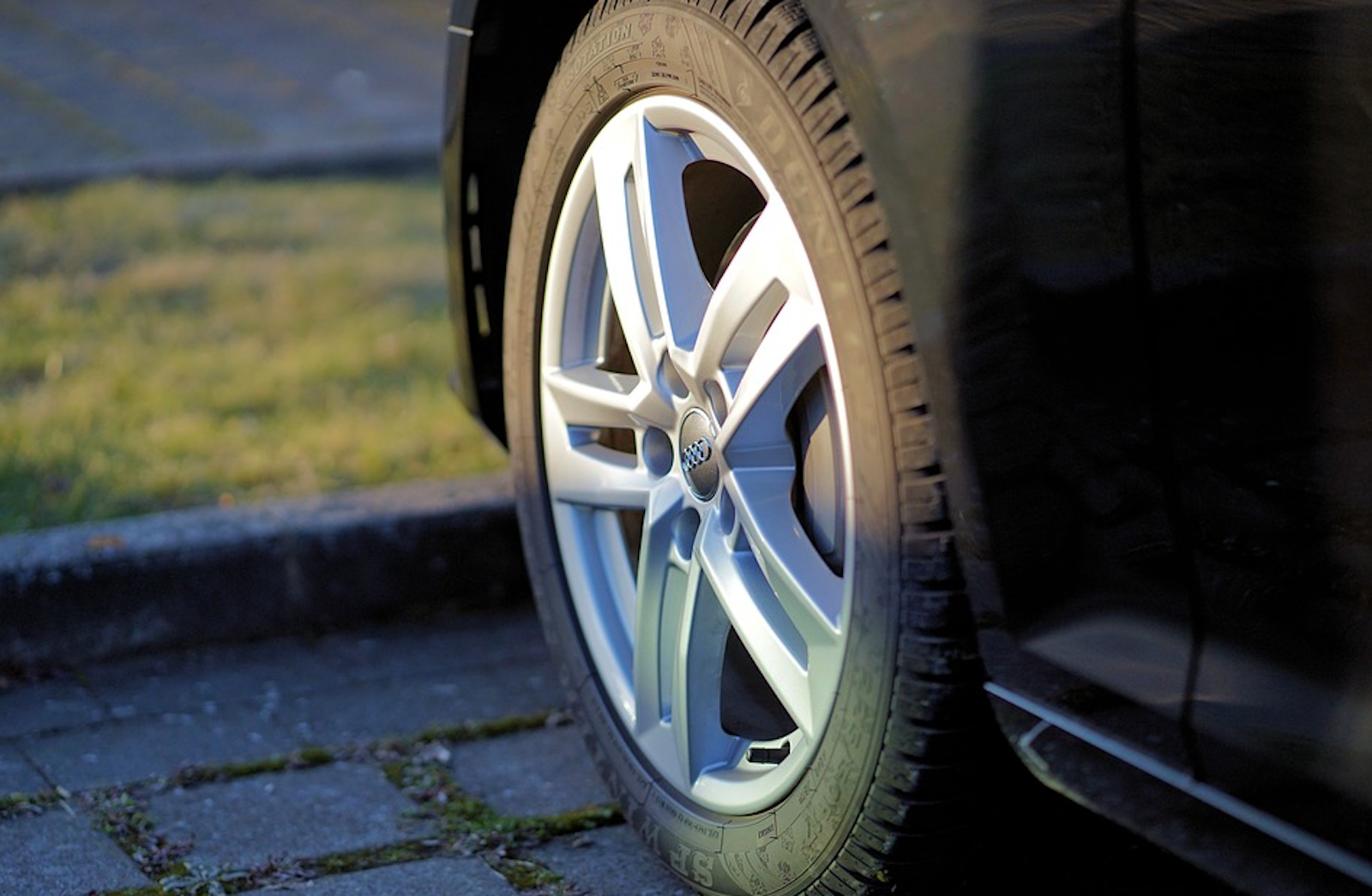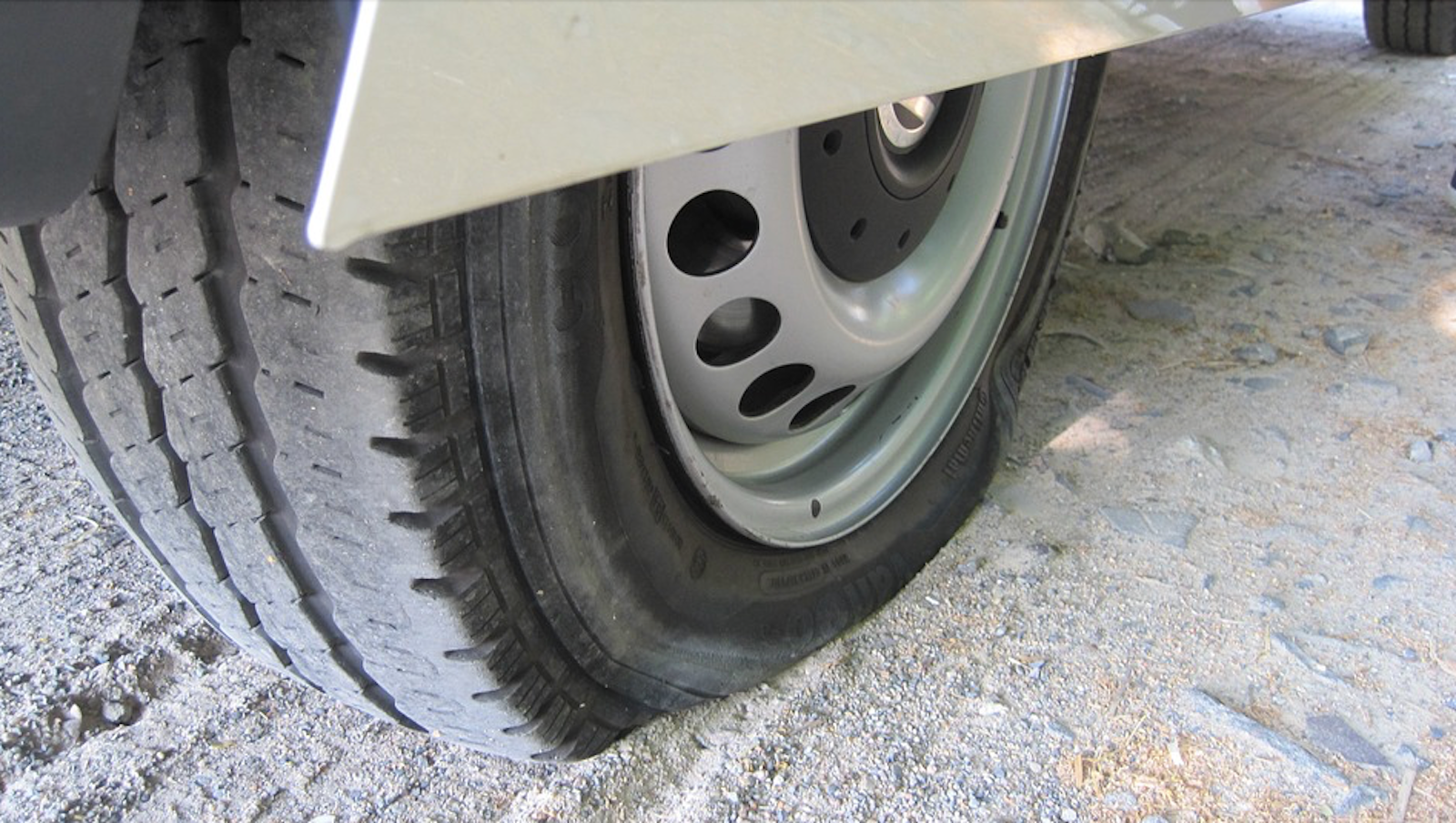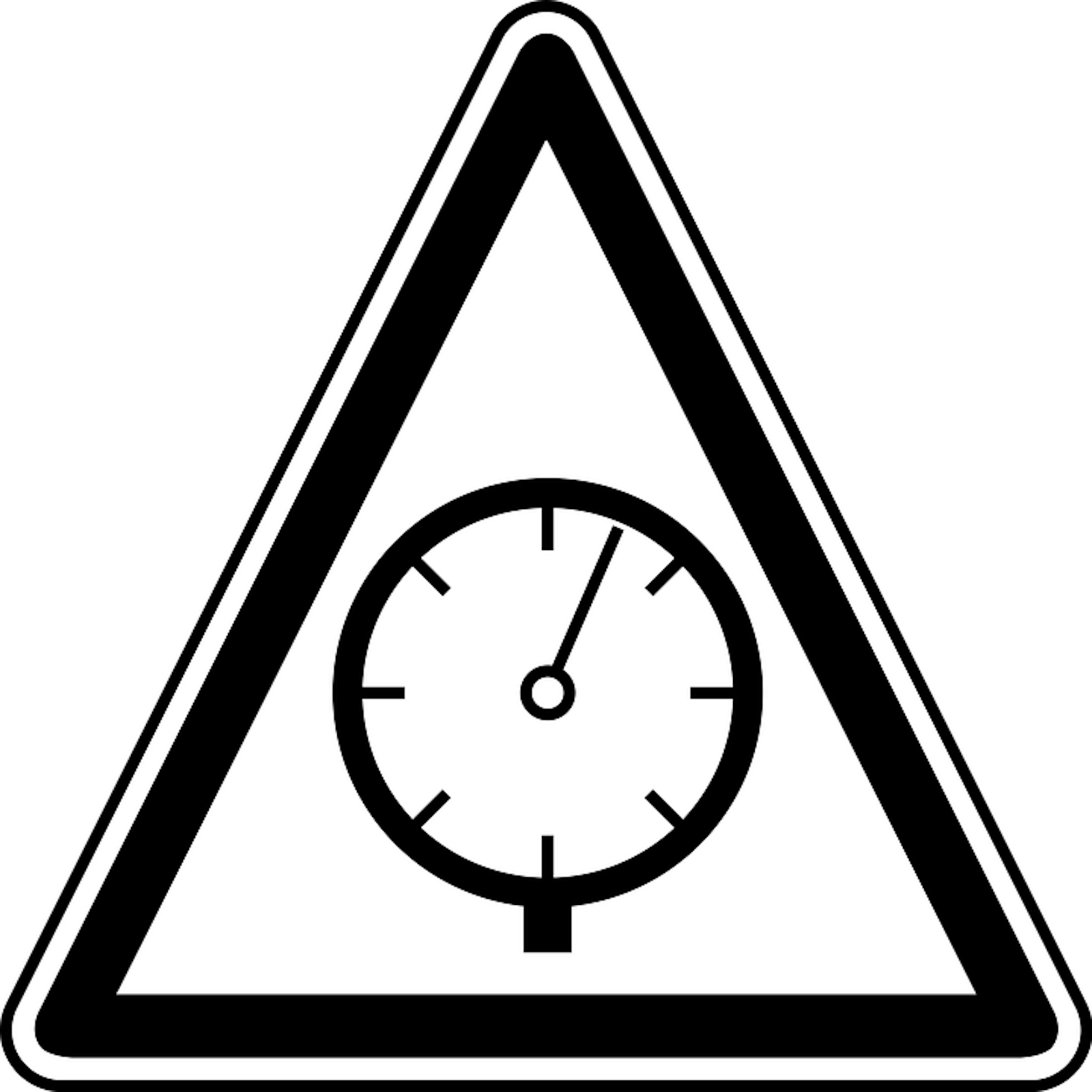The right tyre pressure for a car – everything you need to know about it
The right tire pressure is not only important to be safe on the road, but also has the advantage that you save fuel and protect the tires. We'll show you what to look out for and how to find the right tire pressure for your vehicle.
If you are interested in a new car, then we have some new car offers for you here:
| Model | Offers from | |
| Cupra Born | €27,949 | Compare offers |
| Opel Corsa-e | 26.680 € | Compare offers |
| VW T-Roc | 24.007 € | Compare offers |
| Dacia Spring | €15,689 | Compare offers |
| Hyundai Tucson | €29,053 | Compare offers |

How do I measure the air pressure of the tires?
Drivers tend to measure tire pressure far too rarely. When should you check the tyre pressure? All14 days! Yes, that's how often you should check the tire pressure, because the pressure can escape faster than you think. Just plan a few more minutes regularly during refueling stops. Measuring devices can be found at most petrol stations and are often free to use.
It is particularly important to check the tyre pressure after changing to winter tyres or, of course, vice versa. Especially if you want to put on snow chains, the pressure is important. Due to the long storage of the tires, a lot of air has usually escaped.
What should be taken into account when checking tire pressure?
To be able to check the tire pressure properly, you should first drive a few kilometers. It also makes sense that the outside temperature – if possible – is around 20 degrees. Also make sure that the rim is not damaged or dented: If you see damage, a rim repair may be necessary.
This is how you measure the tire pressure correctly:
- Unscrew valve caps
- Plug in the meter plug
- If the hissing noise does not disappear, the plug is sitting incorrectly
- Read the pressure on the display of the device
- Use positive and negative controls to let in or out the air volume
- Make sure that the tyre pressure is correct depending on the load
If you have fully loaded the car for a holiday trip, then the tyre pressure must be adjusted accordingly. Otherwise, a pressure value should be sufficient in everyday life. If you want to try Hypermiling, tire pressure is also crucial. And don't forget: Every tire wants to be checked – including the spare wheel, if available. However, you don't need that if run-flat tires are fitted.
How do I find the right tyre pressure for my car?
A tyre pressure of around 2.5 bar is considered optimal for passenger cars. However, there are different values depending on the tire and car manufacturer, which you should pay attention to in the best case. To find the right tire pressure for your vehicle, you should check the tire pressure table. There you will also find the pressure, with a high load or many passengers.
In every operating manual of a car, you will find a corresponding tire pressure table under the category Tires, which you should use as a guide. Front and rear tires usually do not have the same pressure, which is also normal. If you would like to drift on a closed track, you also need a different tire pressure on the rear wheels. The pressure also depends on the type of drive: all-wheel drive, front-wheel drive or rear-wheel drive?
Many manufacturers also offer the option of resetting the tire pressure via their operating system, such as Audi MMI.
Optimal tire pressure for winter tires
The tyre pressure drops in the cold, which is why measuring the pressure in winter is even more important. The drop in pressure is due to the fact that fabrics contract in the cold. If you are on the road in winter in very unfavorable weather conditions, then it even makes sense that the tire pressure is a little lower than indicated. This means that the contact surface of the tire is wider and it has more grip, which can reduce the risk of slipping away somewhat.
Tyre pressure for caravans and trailers
Just like with car tyres, the correct tyre pressure for caravans and trailers depends on the tyre and rim. Depending on how big the tire and wheel are and how much the trailer weighs, the tire pressure on a trailer can be between 2.4 and 8.2 bar. The maximum tire pressure is indicated on the trailer tire, check there in advance.
Bei Wohnwagen gibt es auch keinen allgemein gültigen Wert – denn auch hier ist der richtige Druck abhängig vom Gefährt. Man kann aber sagen, dass du lieber etwas zu viel Druck als zu wenig haben solltest. Bei kleinen und mittleren Wohnwagen sind es meist um die 3 Bar, wenn das Wohnmobil mehr als 1.300 Kilogramm wiegt, dann sind meist Schwerlastreifen aufgezogen. Diese brauchen mehr Druck, meist zwischen 4 und 4,5 Bar.
Reifen befüllen – so geht’s
Wie du den Reifendruck misst, haben wir dir weiter oben schon beschrieben. Sollte sich herausstellen, dass Luft fehlt, kannst du ganz einfach deinen Reifen befüllen:
- Drive to the gas station, there are free devices
- Check the owner's manual to see which tire pressure is optimal
- Put the nozzle of the compressor on the valve of the tire
- Pump air into tires; current pressure is displayed on the compressor
If that's too complicated for you, you can also get a fully automatic compressor. There you simply enter how high the bar value in the tire should be, plug it in and the device pumps air into it until the set value is reached.

What happens if the tire pressure is incorrect?
If the pressure in the tire is not right, you will quickly notice it while driving. Especially if you want to drive longer distances, such as by car to Mallorca, you should pay attention to the pressure.
What are the effects of a significant undercutting of the recommended tyre pressure?
Especially if the tire pressure is too low, safe driving behavior is no longer given. The vehicle behaves unstable and, in the worst case, too low pressure can also lead to a tire blowout. Spongy driving and a restless rear end are also indications of too little air. The braking distance is also longer if the tire is not properly inflated. If there is significantly too little pressure, the ESP may even intervene – this is then the last warning to check your tyre pressure.
In addition to security, the contents of your wallet also increase if you pay attention to the right pressure. Because if there is too little air in the tire, fuel consumption increases and tire wear also increases. This means that you need petrol again much sooner and a flat tyre is pre-programmed, which is not exactly a small cost. You should then dispose of the old tire properly.
The risk of aquaplaning on wet roads also increases if the tyre has too little grip.

Was passiert bei einer wesentlichen Überschreitung des optimalen Reifendrucks?
Solltest du versehentlich zu viel Luft in den Reifen gepumpt haben, dann ist dies weniger schlimm als zu wenig Druck. Zu hoch sollte die Abweichung vom empfohlenen Reifendruck aber auch nicht sein. Wenn 0,2 bis 0,3 Bar mehr eingefüllt wurden, ist das aber kein Problem.
Gefährlich wird es aber auch hier, wenn deutlich zu viel Druck im Reifen ist. Denn die Auflagefläche wird verringert und man hat weniger Grip auf der Straße. Das kann zu schnell durchdrehenden Reifen führen, vor allem, wenn die Straße nass ist. Bei dauerhaft zu hohem Luftdruck wird außerdem das Reifenprofil ungleichmäßig abgefahren und der Reifen muss früher ersetzt werden als eigentlich nötig wäre.
Wenn der Reifendruck deutlich zu hoch ist, hat nur noch die Mitte der Reifenlauffläche Kontakt zum Boden. Schon bei einem 0,6 bar höherem Luftdruck kann der Reifen zu hüpfen anfangen und hat damit keinen Kontakt zur Straße mehr. Die Stabilität in der Kurve nimmt ab und auch der Bremsweg verlängert sich.
Mit zu viel Luft im Reifen ist also auch nicht zu spaßen und zusätzlich ist der Reifen auch anfälliger für eine Panne.
Reifengas: Was ist das – und ist es sinnvoll?
Ein Reifen kann neben Druckluft auch mit Stickstoff, dem sogenannten Reifengas befüllt werden. Reifengas wird eigentlich dann eingesetzt, wenn die Reifen hohen Belastungen standhalten müssen und damit mehr Sicherheit erforderlich ist. Bei Rennwagen, Gefahrguttransporten oder Flugzeugen wird beispielsweise Reifengas verwendet.
Will man die Reifen seines normalen Autos mit Reifengas befüllen lassen, kostet das zwischen 10 und 20 Euro für alle vier Reifen. Die Vorteile sollen sein, dass der Druck konstant bleibt und die Luft länger im Reifen verbleibt. Allerdings lohnt es sich nicht – die Gründe sind folgende:
- Korrigieren des Drucks an Tankstelle geht nur mit normaler Luft
- Auch normale Luft hat hohen Stickstoffgehalt
- Bei normalem Einsatz des Fahrzeugs fallen Vorteile kaum auf
- Reifengas entweicht auch – lediglich geringer Unterschied
Was bewirkt ein Reifendruck-Kontrollsystem?
Since the end of 2014, a very useful assistance facility has been mandatory for every newly registered car. We are talking about the tire pressure monitoring system (TPMS). Such systems can vary from manufacturer to manufacturer, but they always have one thing in common: they warn the driver if the tire pressure is not right.
There are direct systems. Here, pressure sensors are attached to all tires, which then detect whether a tire has too little or too much air. The indirect systems can detect the pressure via the ABS or ESP sensors, which are also attached to the tires. If a warning signal sounds, then it is definitely time to check the pressure.
In addition, the tire pressure indicator light may light up. If you see the tire pressure icon, then it's time to check the pressure.
The disadvantage of direct systems is that the sensors have to be reattached every time the tire is changed. This makes changing tires relatively time-consuming and also expensive, because you can calculate another 50 euros per sensor in addition to changing tires.
Whether you have a new car with a tire pressure monitoring system or an older model without this assistance system, the system does not replace regular checks by yourself.
